
China as a
Twenty First
Century
Naval Power
China as a
Twenty First
Century
Naval Power
Theory, Practice, and Implications
Michael A. McDevitt
NAVAL INSTITUTE PRESS
ANNAPOLIS, MARYLAND
Naval Institute Press
291 Wood Road
Annapolis, MD 21402
2020 by Michael McDevitt
All rights reserved. No part of this book may be reproduced or utilized in any form or by any means, electronic or mechanical, including photocopying and recording, or by any information storage and retrieval system, without permission in writing from the publisher.
Library of Congress Cataloging-in-Publication Data
Names: McDevitt, Michael A., author.
Title: China as a twenty-first-century naval power : theory, practice, and implications / Michael A. McDevitt.
Description: Annapolis, MD : Naval Institute Press, [2020] | Includes bibliographical references and index.
Identifiers: LCCN 2020013637 (print) | LCCN 2020013638 (ebook) | ISBN 9781682475355 (hardcover) | ISBN 9781682475447 (epub) | ISBN 9781682475447 (pdf)
Subjects: LCSH: China. Zhongguo ren min jie fang jun. Hai jun. | ChinaMilitary policy. | Sea-powerChina. | Military planningChina.
Classification: LCC VA633 .M39 2020 (print) | LCC VA633 (ebook) | DDC 359/.030951dc23
LC record available at https://lccn.loc.gov/2020013637
LC ebook record available at https://lccn.loc.gov/2020013638
 Print editions meet the requirements of ANSI/NISO z39.481992
Print editions meet the requirements of ANSI/NISO z39.481992
(Permanence of Paper).
Printed in the United States of America.
28 27 26 25 24 23 22 21 209 8 7 6 5 4 3 2 1
First printing
Maps by Chris Robinson.
CONTENTS
ILLUSTRATIONS
Maps
China and the South China Sea
MAP 1. | First and Second Island Chains |
MAP 2. | Taiwan and Taiwan Strait |
MAP 3. | Conventional Ballistic and Cruise Missile Coverage of the Indo-Pacific |
MAP 4. | Major PLA Bases in the South China Sea |
Tables
TABLE 1. | PLA Navy Warship Voyages Abroad: 19851999 |
TABLE 2. | PLA Navy Overseas Deployments: 20002008 |
TABLE 3. | Blue-Water-Capable Ships of Major Naval Powers |
TABLE 4. | The Peacetime Western Pacific Naval Balance around Taiwan (July 2019) |
TABLE 5. | Peacetime Western Pacific Fighter/Strike Air Balance around Taiwan (July 2019) |
TABLE 6. | PLA Rocket Force and Taiwan |
Images
Chinas first aircraft carrier, Liaoning (CV 16)
A Shenyang J-15 Flying Shark about to land
A Flying Shark taking off
Hohhot (DDG 116), a Luyang III (Type 052D)class ship
Subi Reef compared to Pearl Harbor
PREFACE
T his is a book about todays Chinese navy and how it transitioned from the baby operational steps it was taking in the 1990s to the legitimate blue-water force it is today. It argues that ten years of northern Arabian antipiracy patrols, thousands of miles from China, represented the key accelerant in this rise in capability. These operations were a blue-water laboratory where the Chinese navy learned how to sustain warships on distant station for many weeks at a time. They overlapped with the takeoff in Chinese naval warship procurement that began just fifteen years ago. Since 2005 the Peoples Republic of China (PRC) has financed the building of enough warships to create the second-most-capable blue-water navy in the world.
Burdened with the awkward official name of Peoples Liberation Army Navy, the PLA Navy (in some sources simply PLAN) is the naval arm of the Chinese Communist Party (CCP). Although it flies the national flag, its loyalty is to the CCP, and the leaders of the PRC never let its members forget this. This party navy is a modern, well-equipped force that is numerically larger than the U.S. Navy. Yes, the PLA Navy is the largest navy in the world. This is still a bit of shock; in fact, one respected scholar argued in 2018 that China will never become a seapower as long as it remains a vast land empire. [T]he sea is so unimportant [to China] that China does not have [a] navy. Technically, I suppose he is right, but if China does not have a navy, the CCP certainly does. In fact, the sea is so important to the PRC that it has its sights set on becoming a great maritime power with a navy that is world-class, in the words of Xi Jinping, the general secretary of the CCP and also president of the Peoples Republic of China and commander in chief of Chinas military, the PLA.
This book is not a history of the PLA Navy; that book has already been well written, twice, by Dr. Bernard Cole. What it attempts to do is explain how the PLA Navy arrived, seemingly overnight, in its role of eminence; where it is headed in terms of growth; and what role it plays in defending China and Chinese national interests. It delves in some detail into the role the PLA Navy plays in the Chinese militarys layered-defense concept. That concept the U.S. Department of Defense (DoD) characterizes as anti-access and area denial (or, as it is better known by defense experts worldwide, A2/AD). It explains how the PLA Navy fits into a joint Chinese military concept of operations aimed at keeping Americas navy and air force at arms length should conflict between the United States and China break out. The role the PLA Navy might play in denying U.S. armed forces access to the western Pacific Oceanwhere Americas regional allies (Japan, South Korea, the Philippines, and Thailand) all live in the shadow of Chinais explored in this book.
Taiwan, also known as the Republic of China (ROC), is also in the PRCs shadow. Taiwan is an important topic in this book, because it is the East Asian friction point that could most credibly involve the United States in a war with China. Should the PRC elect to use force to reunite what it deems its wayward province, the PLA Navy will play a leading role. In the unlikely but possible event that Xi Jinping orders the PLA to attack, U.S. forces permanently stationed in East Asia could quickly become involved in conflict with China. That is especially true for the U.S. Seventh Fleet and Fifth Air Force, both of which are stationed on Japanese territory. The book explores the operational roles of the PLA Navy and its sister PLA services in such a conflict.
This work also aims to put the PLA Navy into the broader context of Chinas national goal to become a great maritime poweror, as some would have it, a maritime great power. The PRC has developed an impressive blend of all the capabilities one would associate with maritime power. Discovering these facts is the reason I decided to write this book. I was reviewing, in connection with a research project, the text of former PRC leader Hu Jintaos 2012 tediously long work report to the party congress at the end of his term in office. Wading through an English version of the document, I came across a statement establishing as a national objective that China should become a great maritime power. I was immediately struck by the audacity of such an assertion, as well as with its candor and lack of equivocation.
My curiosity was piqued. How did the leadership of the Chinese party-state think about maritime power? How did it interpret maritime power? Why did it want to become a maritime power? These questions eventually led to an eighteen-month study, which in turn eventually led to this book. It became clear over the course of my research that the Chinese Communist Party leadership has concluded that becoming a maritime power is essential to long-term national goalsgoals that the current general secretary has encapsulated as the China Dream, a so-called great rejuvenation of the Chinese state that will be accomplished by 2049.
Next page
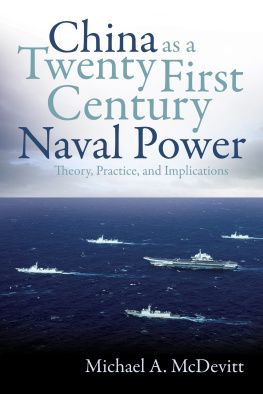

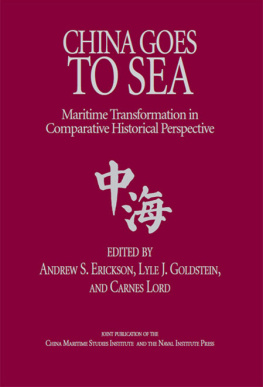

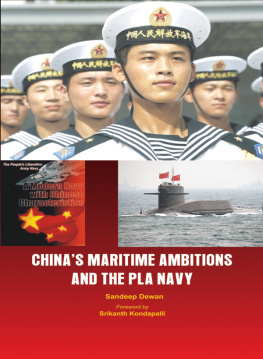

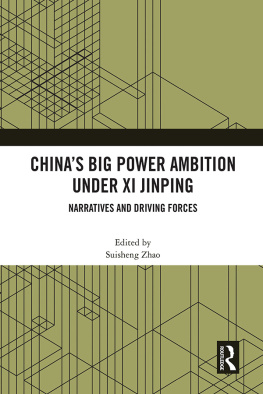
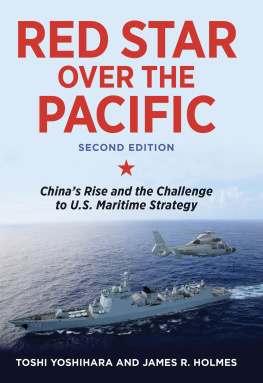
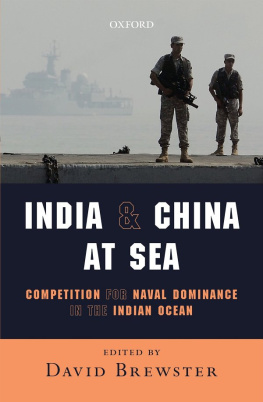
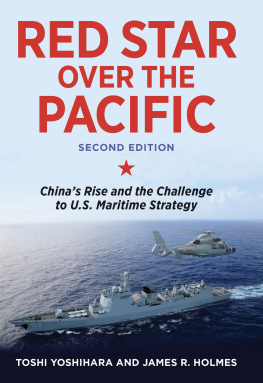

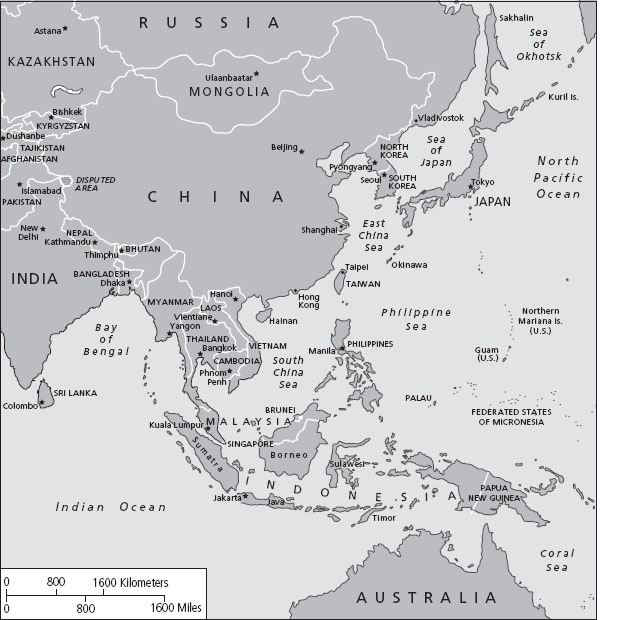
 Print editions meet the requirements of ANSI/NISO z39.481992
Print editions meet the requirements of ANSI/NISO z39.481992